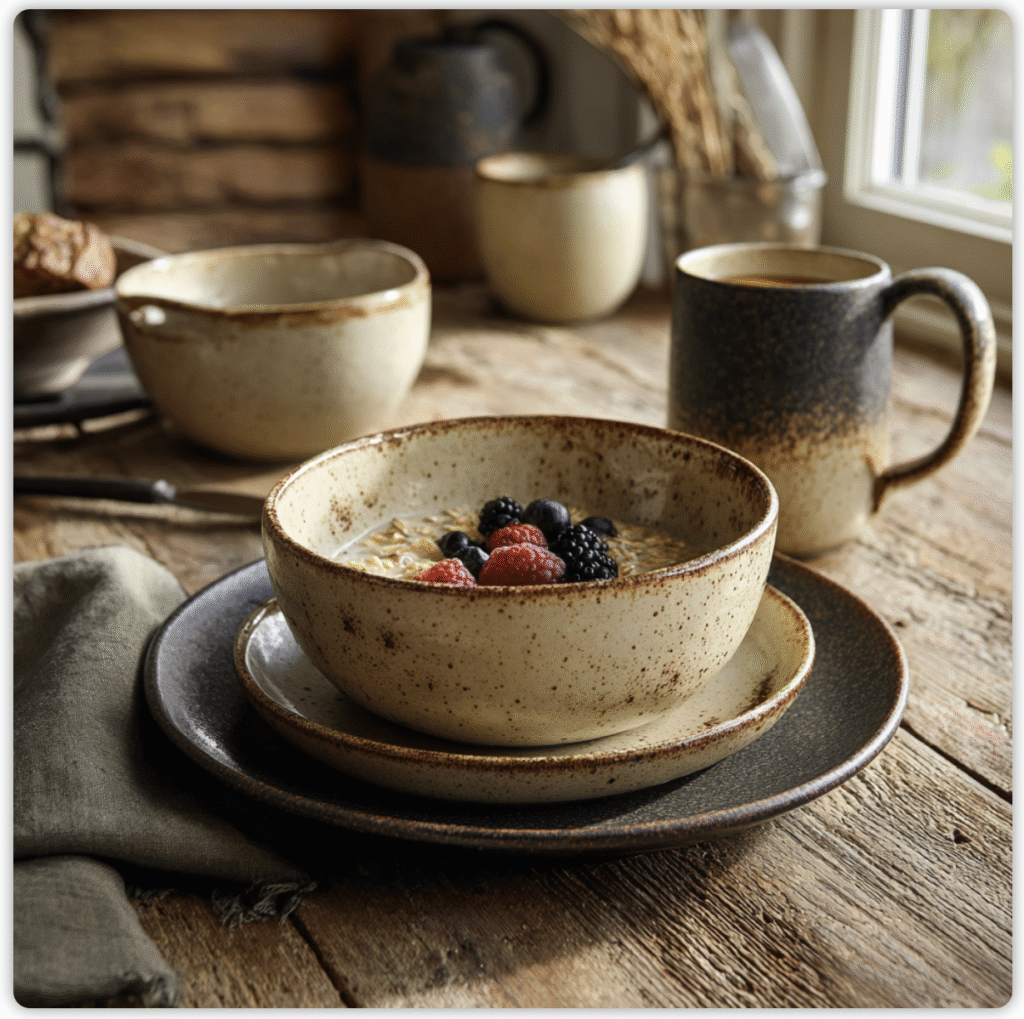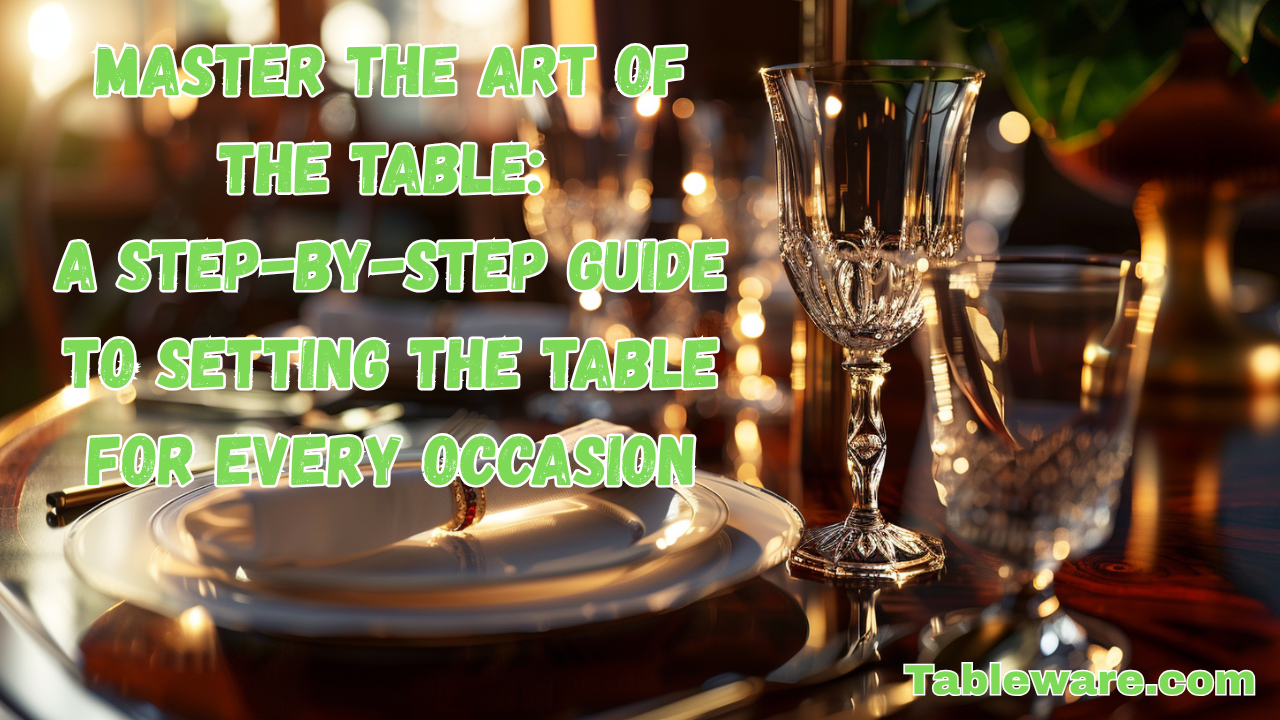Buying new dinnerware is an investment in your daily life. Whether it’s for your morning coffee toast or a Thanksgiving feast, the plates you choose set the tone for every meal.
But standing in the aisle (or scrolling online), the choices can be overwhelming. Bone China, Porcelain, Stoneware, Earthenware—they all look somewhat similar, but they behave very differently. Why is one set $50 and another $500? Which one can survive a tumble in the dishwasher? And which one is safe for the microwave?
At Tableware.com, we believe you shouldn’t need a degree in ceramics to buy a plate. In this guide, we are breaking down the “Big Three” ceramic materials to help you find the perfect match for your lifestyle.
1. Stoneware: The Rustic & Durable Choice
If you love that earthy, handmade aesthetic often found in farmhouse kitchens or hip cafes, you are likely looking at stoneware.
What is it? Stoneware is made from refined clay fired at high temperatures (about 1200°C). As the name suggests, the firing process makes the material dense and stone-like. It is usually thicker and heavier than porcelain.
The Look: Stoneware is known for its textured glazes. It often features a matte finish or reactive glazes (where colors blend organically). It isn’t usually bright white; instead, expect off-whites, greys, and earth tones.
Pros:
- Durability: Highly resistant to scratching and chipping.
- Aesthetic: Adds warmth and texture to the table; great for casual dining.
- Price: Generally more affordable than bone china.
Cons:
- Weight: It can be quite heavy to stack and carry.
- Temperature: While microwave safe, it can get hot to the touch.
Best For: Everyday family meals, casual brunch, and those who prefer a relaxed, “hygge” vibe over formal elegance.
2. Porcelain: The Versatile All-Rounder
Porcelain is the industry standard for hotels and restaurants for a reason: it is incredibly tough yet elegant.
What is it? Made primarily from fine particle clay—typically kaolin—fired at very high temperatures (up to 1450°C). This process vitrifies the clay, making it non-porous and extremely durable.
The Look: Porcelain is known for its bright, crisp white color. Unlike stoneware, it can be made quite thin while retaining its strength. It has a smooth, refined surface that looks just as good at a dinner party as it does at breakfast.

Pros:
- Strength: It is harder and less brittle than stoneware.
- Non-Porous: It won’t absorb water, odors, or bacteria.
- Versatility: It works for both casual and formal settings.
- Appliance Safe: Almost always dishwasher, microwave, and oven safe.
Cons:
- Design: Can feel a bit “cold” or clinical if you prefer a rustic look.
Best For: Households that want one single set of dishes to do it all. It’s the perfect balance of elegance and practicality.
3. Bone China: The Deceptive Heavyweight
Here is the biggest myth in tableware: “Bone China is fragile.” The truth? Bone China is actually the strongest and most durable ceramic material available.
What is it? Bone China is essentially porcelain with one key ingredient added: bone ash (derived from cow bone). The ash makes the clay structure incredibly strong, allowing manufacturers to mold it into thinner, more delicate shapes than standard porcelain.

The Look: It has a unique, creamy white, milky luminosity (warmer than the bright white of porcelain). The hallmark of high-quality bone china is translucency.
- The Test: Hold a bone china plate up to a light source and put your hand behind it. You should be able to see the shadow of your fingers through the plate.
Pros:
- Durability: Highest chip resistance of all ceramics.
- Lightweight: It feels incredibly light and delicate in the hand.
- Elegance: The gold standard for formal dining.
Cons:
- Price: It is the most expensive option due to the complex manufacturing process.
- Ethical Concerns: Since it contains animal by-products, it is not vegan-friendly (New Bone China implies a synthetic substitute).
Best For: Fine dining, holiday hosting, or anyone who appreciates the tactile luxury of thin-rimmed teacups and plates. And yes, you can use it every day!
Comparison at a Glance
| Feature | Stoneware | Porcelain | Bone China |
|---|---|---|---|
| Look | Earthy, opaque, thick | Bright white, refined | Milky white, translucent |
| Weight | Heavy | Medium | Lightweight |
| Durability | High | Very High | Highest |
| Price | $ – $$ | $$ | $$$ |
| Vibe | Casual / Rustic | Modern / Hotel | Classic / Luxury |
Verdict: Which Should You Buy?
Still undecided? Here is our cheat sheet:
- Choose Stoneware if: You love the “Pottery Barn” or “Crate & Barrel” rustic look and want durable plates for heavy daily use, and you don’t mind the extra weight.
- Choose Porcelain if: You want a clean, white canvas for your food. You want plates that are easy to replace, stack neatly in the dishwasher, and never go out of style.
- Choose Bone China if: You want the “Rolls Royce” of tableware. You hate heavy, clunky plates and want something that feels refined but is tough enough to survive accidental knocks.
![]()







